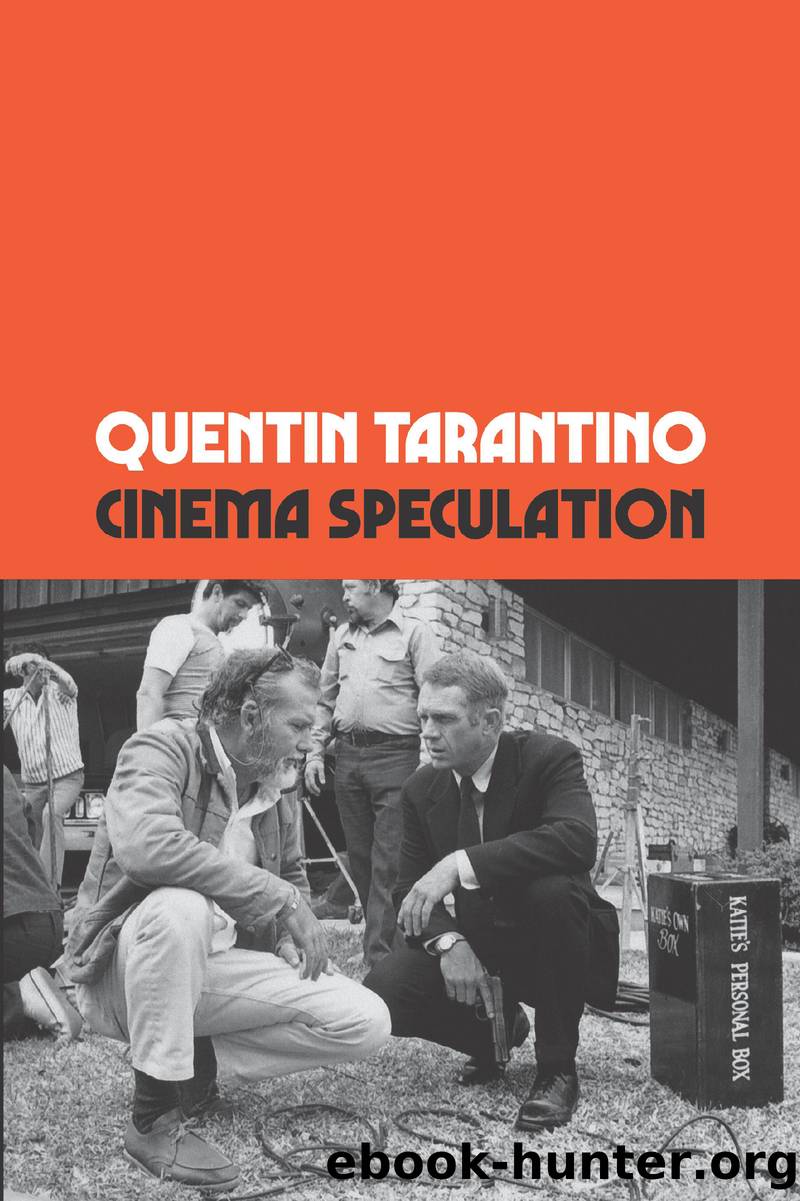Cinema Speculation by Quentin Tarantino

Author:Quentin Tarantino
Language: eng
Format: epub
Publisher: HarperCollins
Published: 2022-09-27T00:00:00+00:00
Daisy Miller
(1974)
A lot of the American Post-Sixties Anti-Establishment Auteurs tried their hand at adapting great authors of literature and theatre. Mike Nichols with Edward Albee, Joseph Heller, and Jules Feiffer. Frank Perry adapted Joan Didionâs Play It as It Lays. Arthur Penn did Thomas Bergerâs Little Big Man. Paul Mazursky did a modern adaptation of Shakespeareâs The Tempest and Isaac Bashevis Singerâs Enemies, a Love Story. Hal Ashby did Jerzy Kosinskiâs Being There. Richard Rushâs magnum opus was Paul Brodeurâs darkly comic novel of paranoia The Stunt Man. And Richard Lesterâs magnum opus would be his brilliant slapstick comedy reinvention of Alexandre Dumasâ The Three Musketeers (which I believe is one of the greatest epic film productions ever made).
And their European counterparts would go even further. John Schlesinger would adapt Thomas Hardy and Nathanael West. Roman Polanski would adapt Shakespeare and Thomas Hardy. Franco Zeffirelli would build his career adapting Shakespeare. Milos Forman would adapt Ken Kesey, E. L. Doctorow, and a truly awful version of Ragni and Radoâs Hair. Ken Russell would do his Ken Russell number on D. H. Lawrence and Aldous Huxley (not to mention all those pseudo-biopics of great composers).
However, when the Movie Brats adapted novels, they leaned more towards popular fiction (The Godfather, Jaws, The Last Picture Show, Carrie, Paper Moon, The Fury). This would change in the eighties and nineties, when all the Movie Brats took a turn for the highbrow. Scorsese would adapt Edith Wharton, Spielberg would adapt J. G. Ballard and Alice Walker, Coppola would tackle Bram Stokerâs most famous creation, Paul Schrader would adapt Mishima and direct Harold Pinter, and De Palma would fall on his face and never really get back up again after fucking up Tom Wolfe.*
But, back in the seventies, the only one of them toâstraight upâtackle classic literature was Peter Bogdanovichâs adaptation of Henry Jamesâ Daisy Miller (yes, Iâm aware that Michael Pye doesnât count Bogdanovich as a Movie Brat. But I do).
What sets Bogdanovichâs adaptation apart from Far from the Madding Crowd or Tess or The Europeans or The Age of Innocence or the whole Masterpiece Theatre vibe of most classic literary film adaptations is the directorâs approach. He tries to turn the first half of the film into a comedy. Bogdanovichâs Daisy Miller goes for and achieves a rapid-fire pace of overlapping Hawksian comedic rhythm to the dialogue. Does that just mean he has the characters talking fast?
Yes.
But Peter had a facility with overlapping (non-improvised) comedic dialogue like none of his peers (it wouldnât be till Bob Clark, in his Porkyâs movies, showed such a similar talent). But admittedly, the film starts off a little bizarre. The tone of the opening scene between Barry Brownâs Winterbourne and Daisyâs nine-year-old brother Randolph (James McMurtry) is a little off-putting. You see what Peter is trying to accomplish, but youâre not sure itâs going to work.
But the film gains power as it progresses and builds to a gut-punch ending. Bogdanovichâs film is very funny, yet it leaves a viewer profoundly sad as you watch the final credits fade up.
Download
This site does not store any files on its server. We only index and link to content provided by other sites. Please contact the content providers to delete copyright contents if any and email us, we'll remove relevant links or contents immediately.
The Kite Runner by Khaled Hosseini(5083)
Gerald's Game by Stephen King(4582)
Dialogue by Robert McKee(4321)
The Perils of Being Moderately Famous by Soha Ali Khan(4169)
The 101 Dalmatians by Dodie Smith(3453)
Story: Substance, Structure, Style and the Principles of Screenwriting by Robert McKee(3397)
The Pixar Touch by David A. Price(3363)
Confessions of a Video Vixen by Karrine Steffans(3245)
How Music Works by David Byrne(3187)
Fantastic Beasts: The Crimes of Grindelwald by J. K. Rowling(2994)
Harry Potter 4 - Harry Potter and The Goblet of Fire by J.K.Rowling(2990)
Slugfest by Reed Tucker(2939)
The Mental Game of Writing: How to Overcome Obstacles, Stay Creative and Productive, and Free Your Mind for Success by James Scott Bell(2845)
4 - Harry Potter and the Goblet of Fire by J.K. Rowling(2655)
Screenplay: The Foundations of Screenwriting by Syd Field(2574)
The Complete H. P. Lovecraft Reader by H.P. Lovecraft(2514)
Scandals of Classic Hollywood: Sex, Deviance, and Drama from the Golden Age of American Cinema by Anne Helen Petersen(2465)
Wildflower by Drew Barrymore(2443)
Robin by Dave Itzkoff(2383)
